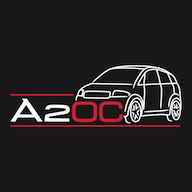Sootywg
A2OC Donor
You had me worried for a moment. My error in the earlier post. The tap I purchased is indeed M12x1.5 (not 1.25mm) phew.@Sootywg the bolt is difficult to pick out in the manual. If it is M12 1.5 by 100mm then the torque is a big one 70 Nm + 90 degrees.
Edit, I see the tap you used was M12 1.25. I don’t right now have access to my manual. It could be a typo on my part on the bolt size. Wait until somebody else comments re the torque. I will check again tomorrow.
In my case there was very little female thread left. My bolt was the same as the one @Howey posted. I had to fight it all the way out with a 6 sided socket and a long breaker.
Had it been a 1.25mm, the thread would have been wrecked and a hell of a lot more swarf and a new console required. For some reason I thought it was 1.25 when I posted.
Removing it required a long breaker to start but then only a 12” socket wrench the rest of the way.
This is the best pic I can get of the thread in the console.
Glad I took the photo, it needs flushing out I think.
Attachments
Last edited:



